Can dandelions and bees and your neighbors peacefully coexist? Could I leave our dandelions for the bees? Could you? And what would the neighbors think?
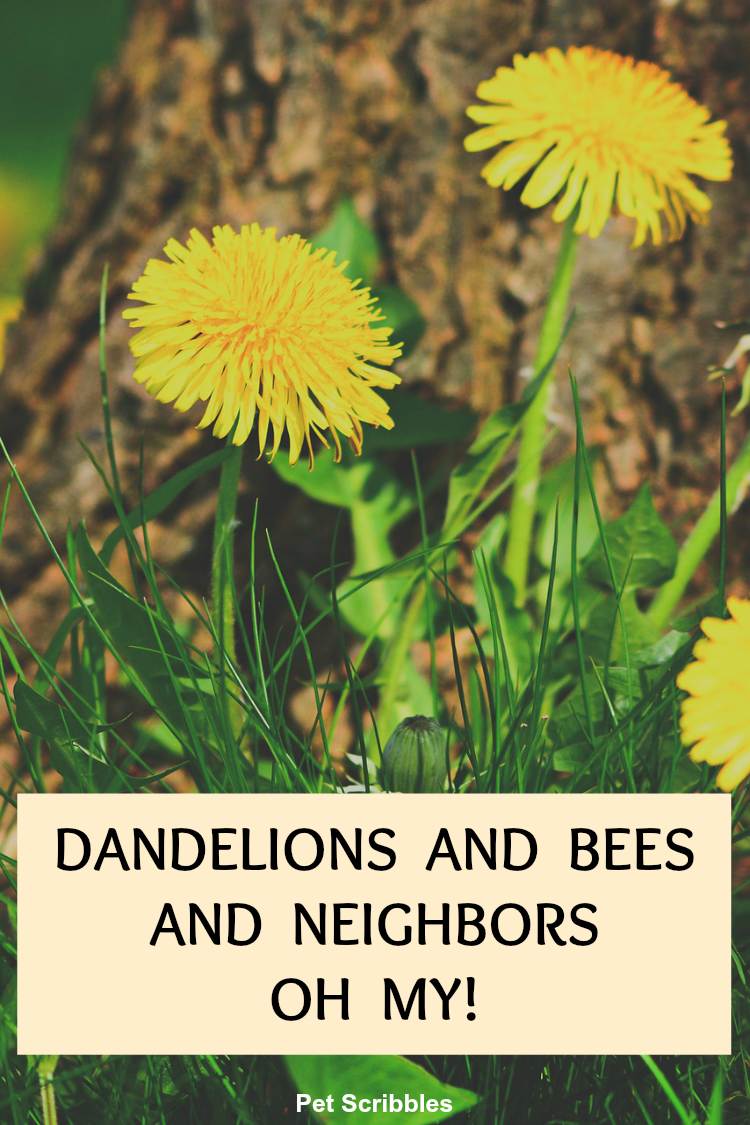
A few days ago, I read an article about dandelions in The Guardian that made me stop and think.
The article — Help Bees By Not Mowing Dandelions, Gardeners Told — says dandelions are a great food source for bees and other early pollinators.
Several quotes by Professor Jane Memmott, an ecology professor and president of the British Ecological Society, got me thinking about dandelions more than I imagined.
Gardeners should avoid mowing over dandelions on their lawn if they want to help bees, according to the new president of the British Ecological Society.
Dandelions – which will start flowering in the UK this month – provide a valuable food source for early pollinators coming out of hibernation, including solitary bees, honey bees and hoverflies.
I spent quite some time thinking about this.
Could I leave our dandelions alone? This was closely followed by “what would the neighbors think?”
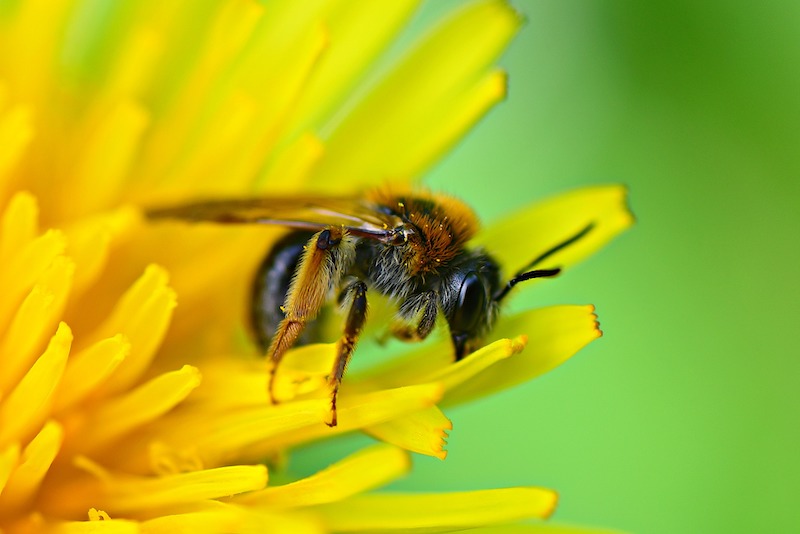
At the rate our beloved bees are declining, my heart and head both agree this should be done.
However, I’m also wrestling with reality.
Dandelions and American green lawns
I live in a neighborhood typical of American neighborhoods when it comes to dandelions: they are a weed that must be eradicated at all costs.
From spraying with pesticides to digging them up by hand (the latter is my preferred method), dandelions need to go.
And if you’re like me — someone who isn’t hot and bothered by them — just keep your opinions to yourself and pretend you’re like everyone else.
You see, in our neighborhood, if someone has a lot of dandelions in their yard it becomes the focus of several other homes.
Will those dandelions go to seed and then spread to everyone else’s yards? Heaven forbid.
When will [insert name of neighbor] take care of their [insert swear word] dandelions?

When we first moved in, our well-meaning neighbors told us how many dandelions the previous owners of our property had. The hidden message was: we’re glad you’re here now to remedy the problem.
As I said, I’m positive this isn’t any different than most American neighborhoods with green grass in every yard.
Well, in almost every yard, as we got rid of our grass years ago. It didn’t make sense to us to spend all that time and money on something you want to grow only to keep mowing it back more than once a week, spraying for crab grass and weeds and so on.
Could I leave our dandelions alone?
Keeping dandelions helps the bees. They are pretty flowers, as many flowering weeds are. Dandelions aren’t the only flower bees love, but every little bit helps, right?
But even I want those yellow weeds out of my garden beds. After lots of thinking — probably way too much thinking about this — I did the math. Only 30% of me doesn’t like when a random dandelion pops up in our gardens. The remaining 70% of me worries the neighbors will cast side-long glances at the unwanted yellow invaders.
One time my husband mentioned a dandelion sticking up out of our low-spreading junipers. Maybe he thought I forgot to get it out of there. I had actually noticed it, but forgot about it.
I don’t freak out when I see a dandelion. In fact, sometimes I’ll just lob the heads off so they won’t go to seed. More for the neighbors than myself.
I grew up with dandelions, and the same discussions. One of my gardening chores was helping my parents dig up the dandelions. It’s been a part of my thinking my entire 53 years of life. Well, maybe not during my infancy. I don’t remember back that far.
Would we love dandelions if they were rare flowers?
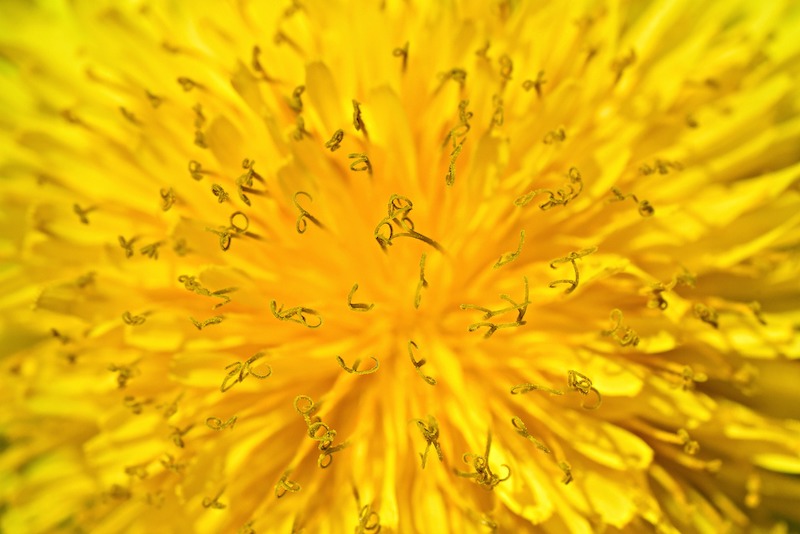
Each dandelion head contains up to 100 individual flowers, known as florets, which contain nectar and pollen. … Prof Jane Memmott said: “If dandelions were rare, people would be fighting over them. Because they’re common, people pull them out and spray them off and all sorts of horrible things. Just let them flower.”
She’s got a point there — we gardeners can easily become more interested in rare plants or limited quantity flowers. It’s easy to overlook the common annual geranium when you can plant a rare blue poppy instead.
She said gardeners should avoid planting too many “pompom shaped” flowers, such as old English roses and dahlia, because they focus so much of their energy on producing petals and have very little nectar and pollen. “As a rule, if you can see the pollen and nectar parts of a flower without pulling back petals, then it’s OK for pollinators,” she said. Carrots that have flowered, or “bolted”, and onions in unkempt vegetable gardens are also some of the best plants for pollinators.
I immediately thought of my hate-affair with the garlic chives in our gardens. Maybe I should just leave those darn things alone, as they take over our entire backyard.
Is that the new bright side?
Or at least the excuse I can now use?
No, I promise you this: I love bees but I can not have garlic chives everywhere.
Dandelions and bees and lip balm?
Remember, Victorians loved dandelions, using them in salads and teas.
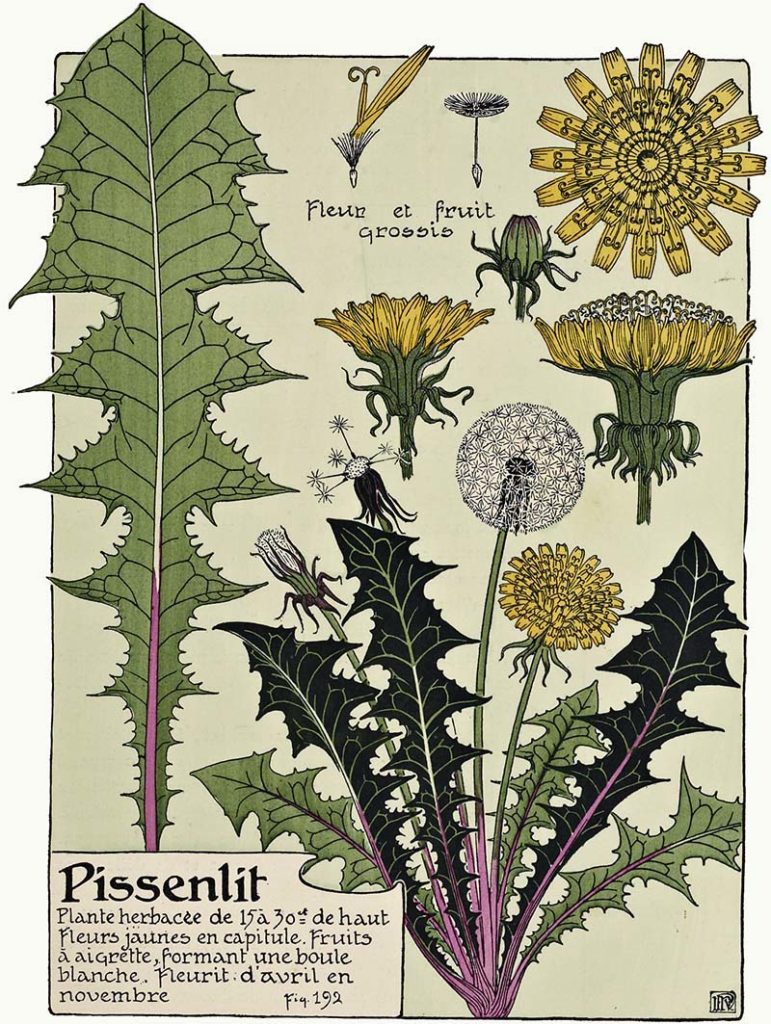
Today, a simple Pinterest search reveals many DIYs for everything from dandelion soap to vinegar to lip balm and more. And if you search for dandelion salads, you’ll be amazed at how many recipes there are!
If more and more people are eating dandelions and making things with them, doesn’t that mean they aren’t leaving the dandelions for the bees?
Could you leave your dandelions alone?
The article concludes with this suggestion: “leave a strip of garden that is cut only once in Autumn and once in Spring” to provide bees and other pollinators with wildflowers and clovers and buttercups. In our case we even see wild strawberries.
So what do you think?
Would you leave a no-mow strip somewhere on your property to help the early pollinators?
Should you become a horrible neighbor by letting the dandelions run wild in your grass?
Could you leave your dandelions alone?
While I console myself knowing I plant many flowers and shrubs that are great pollinators, I’m still thinking about this article five days after reading it.
And I’m still feeling a bit uncomfortable if I’m doing my part to help save the bees knowing an easy solution is right outside our front doors.
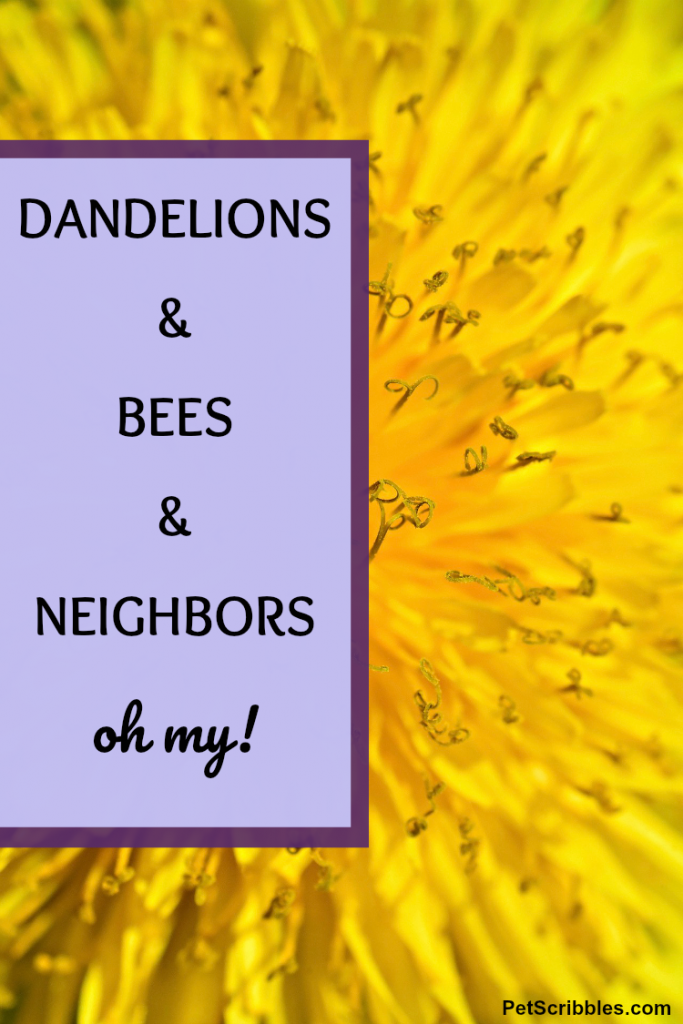
All photos by Mabel Amber, still incognito… from Pixabay. Vintage dandelion image available from Picture Box Blue.

I think your neighbors need to be educated and stop embracing such an environmentally unsound and old-fashioned concept of lawn. I could care less if had neighbors who had a problem with dandelions. This suburban conformity is bad for the bees and the planet.
I completely agree with you Mary! But it’s amazing just how prevalent this is in just about every suburban neighborhood! It’s what keeps those lawn service companies in business! I’m so happy we got rid of our lawn entirely, and now just enjoy our garden beds — as well as watching the birds and bees enjoy our garden beds too!